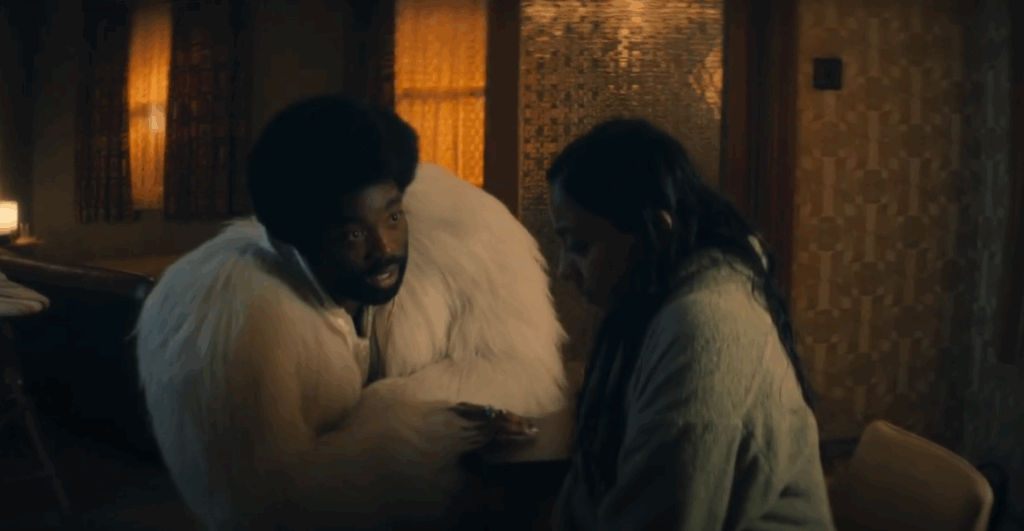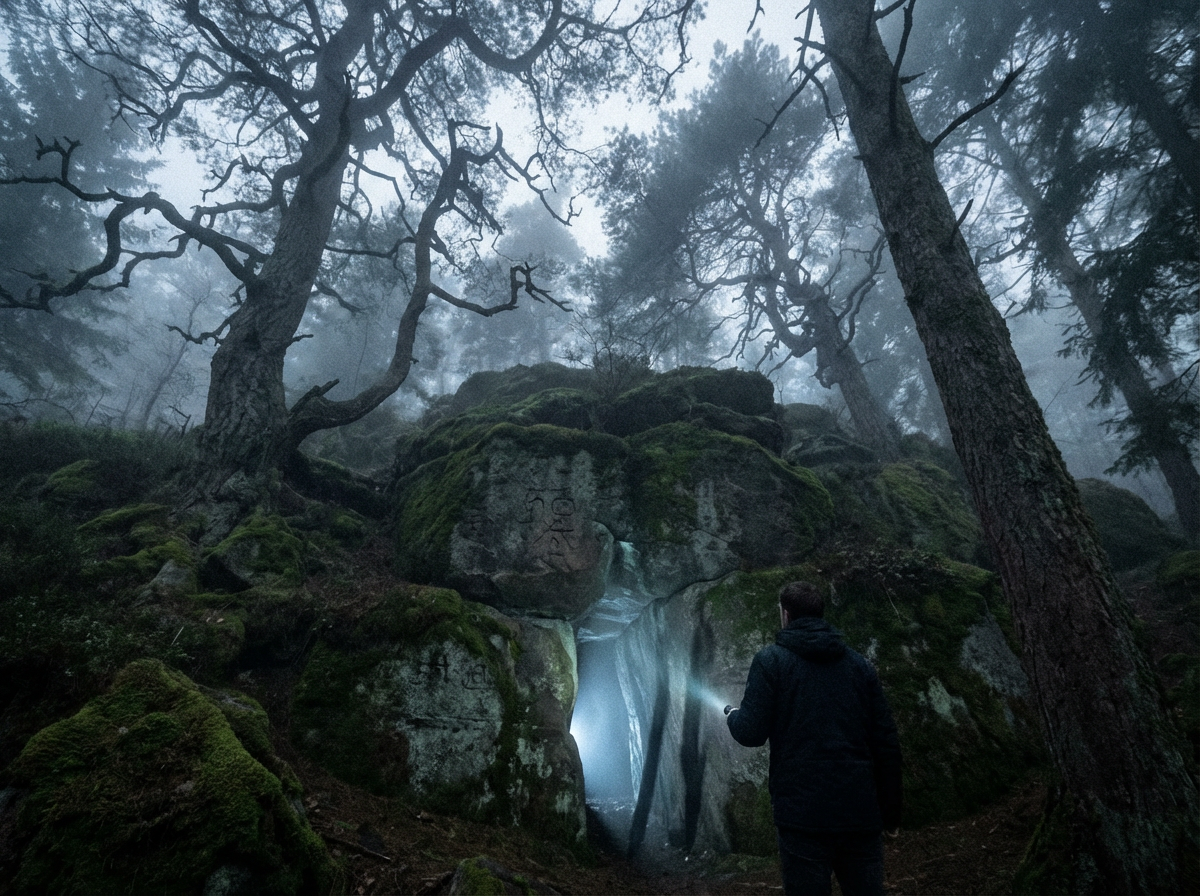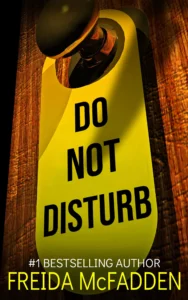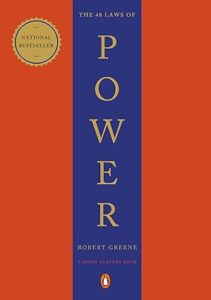Black Mirror Demon 79 Explained | Recap & Review
Recap
For five seasons, the Black Mirror brand was crystal clear: Tech is bad, your iPhone wants to kill you, and the future is sterile and terrifying. It’s a brilliant, potent formula. But formulas, as any studio exec will tell you, have a shelf life. They breed expectation. And expectation is the enemy of the twist.
We, the audience, got too smart for the show. We started guessing the “gotcha” in the first act. “Oh, they’re in a simulation.” “She’s a cookie.” “He’s a digital ghost.” The showrunner, Charlie Brooker, a writer I deeply respect, was trapped in a box of his own design.
So, what does a smart writer do? You don’t just break the box. You set it on fire, build a new one, and label it something else.
Enter Demon 79.
This isn’t an episode; it’s a mission statement. It’s the pilot for a show-within-a-show, brazenly branded “Red Mirror”. It’s Brooker looking us dead in the eye and saying, “Don’t wait for the tech twist. It’s not coming. This is a horror story.”
And what a story. Demon 79 isn’t just the best episode of its season; it’s a near-perfect piece of writing that understands the most powerful tool in the Black Mirror kit isn’t paranoia, it’s empathy.

The Pitch
The high-concept pitch for Demon 79 is so audacious it borders on parody: A meek, Indian shop clerk in 1979 Britain, facing a daily onslaught of soul-crushing racism from the National Front, accidentally summons a demon who looks like the guy from Boney M. The demon, Gaap, informs her she must commit three human sacrifices in three days, or the world ends.
It’s Shaun of the Dead by way of a Ken Loach film. It’s a political allegory wrapped in a “buddy-comedy” shell. And from a craft perspective, the execution is flawless.
The episode’s power doesn’t come from the supernatural plot. It comes from the all-too-real human one. The real horror of Demon 79 isn’t the impending nuclear apocalypse; it’s the casual, daily-grind horror of racism. It’s the “Go home, Paki” graffiti. It’s the smug politician, Michael Smart, weaponizing white fear for votes. It’s the way our protagonist, Nida (a devastatingly good Anjana Vasan), has to literally eat her co-worker’s shit-stained lunch rather than make a sound.
The script, co-written by Bisha K. Ali, understands that Nida’s rage was already there. The demon, the talisman, that’s just the inciting incident. It’s the permission she needed to finally act.
This brings us to Gaap. In a lesser script, the demon is a CGI-monster of fire and brimstone. Here, he’s a junior-level employee on his first big assignment, a flamboyant, slightly inept guide (played with genius timing by Paapa Essiedu) who is, ironically, the only “person” in Nida’s life who truly sees her. Their relationship isn’t one of terror; it’s a workplace comedy. He’s the chaotic new partner, and she’s the one who has to do all the wetwork.
Ending Explained
This is where the episode becomes a masterpiece.
As Nida’s mission spirals out of control, the script masterfully lays out the “logical” escape hatch for the audience. The Black Mirror twist we’ve been trained to expect.
We see her talking to herself. We learn about her mother’s schizophrenia. The cops who catch her after she attacks the politician don’t see Gaap. They see a “mad” woman. They put her in a room, and her interrogation feels exactly like a psychiatric evaluation.
We, the smart audience, are all nodding. Ah, I get it. It was all in her head. The demon, the talisman, the apocalypse… it’s a psychic break brought on by the trauma of her life. That’s the twist.”
The clock ticks to midnight. Nida looks at the empty chair where Gaap was. She failed. She is alone. The cops sigh, relieved.
And then the air raid sirens begin.
The police officer looks out the window, and his face melts into pure, abject terror. Through the blinds, we see the white-hot flash of a nuclear bomb.
The twist, the single most brilliant, defiant twist in Black Mirror history, is that it was all real.
The demon was real. The talisman was real. The apocalypse was real.
Nida was not insane. She was a prophet. The world was exactly as broken, as fragile, and as doomed as she felt it was. Her “delusion” was the only thing that was true.
Gaap reappears. He failed his mission, too. He’s going to be cast into eternal oblivion. But, he says, he doesn’t have to go alone. He offers Nida his hand. He offers her an eternity wandering the void, just the two of them.
She looks at the world ending outside her window, the world that hated her, that ignored her, that told her to “go home.” And then she looks at the one being who ever validated her anger. She takes his hand. She smiles.
The Review
As a piece of screenwriting, “Demon 79” is a 10/10.
It’s a perfect subversion of the Black Mirror brand while remaining true to its cynical heart. It proves that the “Red Mirror” concept is more than a gimmick; it’s a brilliant way to expand the show’s narrative universe.
The episode understands that true horror isn’t a demon; it’s political apathy. It’s the polite, smiling face of fascism on TV. It’s the quiet majority who’d rather let the world burn than stand up to a bully.
In the end, Nida gets her “happily ever after.” It’s not the one she wanted, but it’s the one she earned. By giving us a literal apocalypse, the show refuses to give us, or Nida, an easy out. It validates her rage and, in its final, glorious shot, turns the end of the world into a romantic-comedy walk-off. Nida and Gaap, hand-in-hand, strolling into nuclear fire as Boney M. plays.
It’s cynical, it’s brutal, it’s hilarious, and it’s deeply, deeply romantic. It’s a story that argues the only sane response to an insane world is to find the one other “person” who sees it, too, and just walk away from it all. Even if “away” is oblivion.













Post Comment